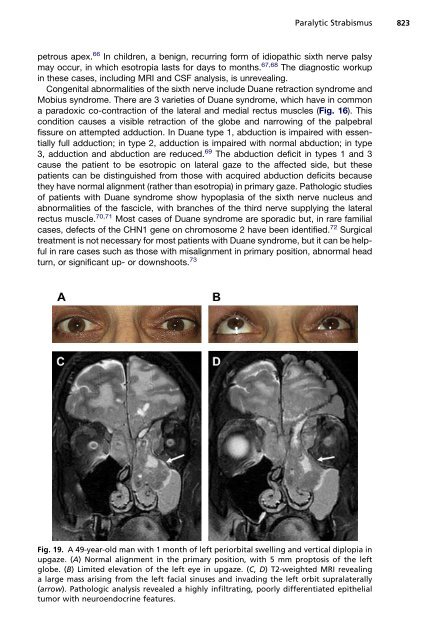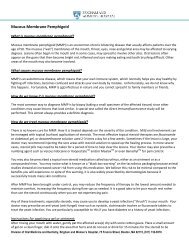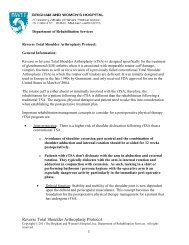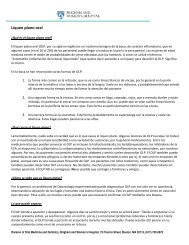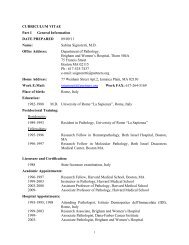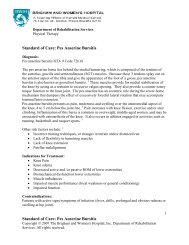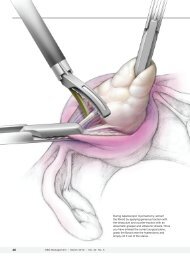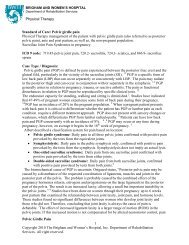Paralytic Strabismus: Third, Fourth, and Sixth Nerve Palsy
Paralytic Strabismus: Third, Fourth, and Sixth Nerve Palsy
Paralytic Strabismus: Third, Fourth, and Sixth Nerve Palsy
You also want an ePaper? Increase the reach of your titles
YUMPU automatically turns print PDFs into web optimized ePapers that Google loves.
<strong>Paralytic</strong> <strong>Strabismus</strong> 823<br />
petrous apex. 66 In children, a benign, recurring form of idiopathic sixth nerve palsy<br />
may occur, in which esotropia lasts for days to months. 67,68 The diagnostic workup<br />
in these cases, including MRI <strong>and</strong> CSF analysis, is unrevealing.<br />
Congenital abnormalities of the sixth nerve include Duane retraction syndrome <strong>and</strong><br />
Mobius syndrome. There are 3 varieties of Duane syndrome, which have in common<br />
a paradoxic co-contraction of the lateral <strong>and</strong> medial rectus muscles (Fig. 16). This<br />
condition causes a visible retraction of the globe <strong>and</strong> narrowing of the palpebral<br />
fissure on attempted adduction. In Duane type 1, abduction is impaired with essentially<br />
full adduction; in type 2, adduction is impaired with normal abduction; in type<br />
3, adduction <strong>and</strong> abduction are reduced. 69 The abduction deficit in types 1 <strong>and</strong> 3<br />
cause the patient to be esotropic on lateral gaze to the affected side, but these<br />
patients can be distinguished from those with acquired abduction deficits because<br />
they have normal alignment (rather than esotropia) in primary gaze. Pathologic studies<br />
of patients with Duane syndrome show hypoplasia of the sixth nerve nucleus <strong>and</strong><br />
abnormalities of the fascicle, with branches of the third nerve supplying the lateral<br />
rectus muscle. 70,71 Most cases of Duane syndrome are sporadic but, in rare familial<br />
cases, defects of the CHN1 gene on chromosome 2 have been identified. 72 Surgical<br />
treatment is not necessary for most patients with Duane syndrome, but it can be helpful<br />
in rare cases such as those with misalignment in primary position, abnormal head<br />
turn, or significant up- or downshoots. 73<br />
Fig. 19. A 49-year-old man with 1 month of left periorbital swelling <strong>and</strong> vertical diplopia in<br />
upgaze. (A) Normal alignment in the primary position, with 5 mm proptosis of the left<br />
globe. (B) Limited elevation of the left eye in upgaze. (C, D) T2-weighted MRI revealing<br />
a large mass arising from the left facial sinuses <strong>and</strong> invading the left orbit supralaterally<br />
(arrow). Pathologic analysis revealed a highly infiltrating, poorly differentiated epithelial<br />
tumor with neuroendocrine features.


